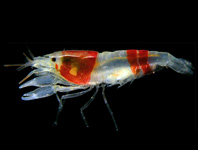Abstract
We provide a map of the 14 biogeographic provinces of Mexico based on the ecoregions recognized for the country, which combine climatic, geological and biotic criteria. These provinces belong to the Nearctic region (Californian, Baja Californian, Sonoran, Chihuahuan Desert and Tamaulipas provinces), Neotropical region (Pacific Lowlands, Balsas Basin, Veracruzan and Yucatán Peninsula provinces) and the Mexican transition zone (Sierra Madre Occidental, Sierra Madre Oriental, Transmexican Volcanic Belt, Sierra Madre del Sur and Chiapas Highlands provinces). In order to facilitate future biogeographic analyses, we provide a file of the biogeographical regionalisation of Mexico by converting the map into a polygon shapefile and a raster file with all provinces. We also separately provide each of the provinces in vector and raster format. All the maps are in geographical and Lambert Conformal Conic projections.
References
Challenger, A. & Soberón, J. (2008) Los ecosistemas terrestres. In: Sarukhán, J. (Ed.), Capital natural de México. Vol. I. Conocimiento actual de la biodiversidad. Conabio, Mexico City, pp. 87–108.
Cuervo-Robayo, A., Téllez-Valdés, O., Gómez-Albores, M.A., Venegas-Barrera, C.S., Manjarrez, J. & Martínez-Meyer, E. (2014) An update of high-resolution monthly climate surfaces for Mexico. International Journal of Climatology, 34, 2427–2437.
https://doi.org/10.1002/joc.3848Ebach, M.C., Morrone, J.J., Parenti, L.R. & Viloria, Á.L. (2008) International Code of Area Nomenclature. Journal of Biogeography, 35, 1153–1157.
https://doi.org/10.1111/j.1365-2699.2009.02106.xEscalante, T. (2013) Atlas biogeográfico de los mamíferos terrestres de América del Norte: una nueva opción en internet. Therya, 4, 5–8.
https://doi.org/10.12933/therya-13-113Escalante, T., Rodríguez-Tapia, G., Linaje, M., Morrone,J.J. & Noguera-Urbano, E. (2014) Mammal species richness and biogeographic structure at the southern boundaries of the Nearctic region. Mammalia, 78, 159–169.
https://doi.org/10.1515/mammalia-2013-0057Espinosa Organista, D., Ocegueda-Cruz, S., Aguilar-Zúñiga, C., Flores Villela, O. & Llorente-Bousquets, J. (2008) El conocimiento biogeográfico de las especies y su regionalización natural. In: Sarukhán, J. (Ed.), Capital natural de México. Vol. I. Conocimiento actual de la biodiversidad. Conabio, Mexico City, pp. 33–65.
ESRI (1998) Shapefile Technical Description. Environmental Systems Resource Institute, Redlands, California. Available from: http://support.esri.com/white-paper/279 (accessed 23 May 2017)
ESRI (2012) ArcGIS Desktop Sofware. Release 10. Environmental Systems Resource Institute. Redlands, California. [software]
Hijmans, R.J., Cameron, S.E., Parra, J.L., Jones, P.G. & Jarvis, A. (2005) Very high resolution interpolated climate surfaces for global land areas. International Journal of Climatology, 25, 1965–1978.
https://doi.org/10.1002/joc.1276INEGI-CONABIO-INE (2008) Ecorregiones terrestres de México. Scale 1:1000000. Instituto Nacional de Estadística, Geografía e Informática (INEGI) -Comisión Nacional para el Conocimiento y Uso de la Biodiversidad (CONABIO) - Instituto Nacional de Ecología (INE), Mexico City. [map]
Löwenberg-Neto, P. (2014) Neotropical region: A shapefile of Morrone's (2014) biogeographical regionalization. Zootaxa, 3802 (2), 300.
https://doi.org/10.11646/zootaxa.3802.2.12Morrone, J.J. (2005) Hacia una síntesis biogeográfica de México. Revista Mexicana de Biodiversidad, 76, 207–252.
Morrone, J.J. (2010) Fundamental biogeographic patterns across the Mexican Transition Zone: An evolutionary approach. Ecography, 33, 355–361.
https://doi.org/10.1111/j.1600-0587.2010.06266.xMorrone, J.J. (2014) Biogeographical regionalisation of the Neotropical region. Zootaxa, 3782 (1), 1–110.
https://doi.org/10.11646/zootaxa.3782.1.1QGIS Development Team (2016) QGIS Geographic Information System. Open Source Geospatial Foundation. Available from: http://qgis.osgeo.org (accessed 23 May 2017)

